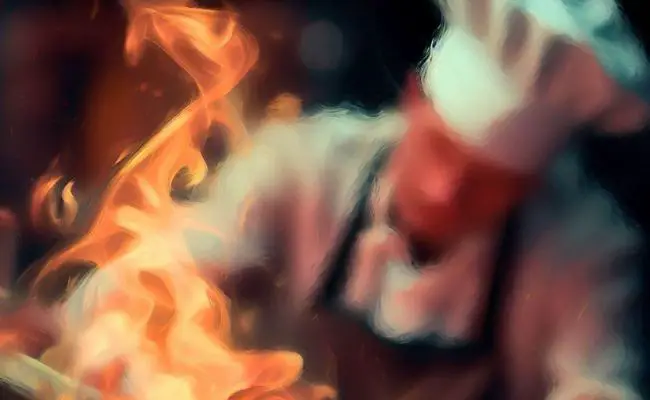Fire has been an essential tool in cooking since the dawn of civilization. There’s just something captivating about the flickering flames dancing around a dish, creating a sensory experience that goes beyond taste alone. So why do chefs cook with fire? Let’s explore the reasons behind this age-old practice.
The Flambé Phenomenon
- It’s not setting food on fire. It’s a cooking technique called flambé. It involves pouring some type of alcohol and making a controlled fire.
- Flambé is the French word for “flamed” or “flaming.” Liquor is poured over food and ignited, leaving behind the subtle flavor of the liquor or liqueur without the lingering flavor of alcohol.
- Professional chefs flambé many things — meats, desserts, even bananas. Not only is it visually spectacular, but it is thought to add to the flavor of the dish — driving off the sharpness of the alcohol while leaving a beautiful caramelized flavor in its place.
- This technique adds flavor to the dish, making it a delightful experience for both the taste buds and the eyes.
Showmanship and Tableside Flair
- Flambé is not only about taste; it’s also about the experience. It’s a display of showmanship, usually performed inside a restaurant to entice diners’ attention and promote curiosity-driven sales.
- When a chef ignites a dish in front of the guests, it creates a sense of excitement and anticipation. The flames leap up, captivating the audience and turning a meal into a performance.
- This tableside flair not only adds entertainment value but also creates a memorable dining experience. It’s like witnessing culinary magic unfold right before your eyes.
Caramelization and Deeper Flavors
- Fire, with its concentrated heat, helps to caramelize sugars and create deeper flavors. When ingredients are exposed to high heat, the natural sugars in them undergo a Maillard reaction, resulting in a complex and rich taste profile.
- The flames sear the surface of the food, creating a delightful crust that locks in moisture and enhances the overall flavor. This process adds depth and complexity, taking the dish to new culinary heights.
- The combination of fire and heat can transform an ordinary ingredient into something extraordinary, elevating the dining experience to a whole new level.
Outdoor Grilling and Smoky Flavors
- When you’re cooking outdoors on a grill, you’re also exposing the food to smoky flavors. As the fat drips off the meat, it hits the coals or the hot metal and creates smoke.
- This smoke then rises and bastes the food, infusing it with even more flavor. The result is a tantalizing combination of charred goodness and aromatic smokiness that is hard to resist.
- Grilling over an open flame not only imparts a distinctive taste but also adds a touch of nostalgia. It harkens back to our primal instincts and connects us with the ancient art of cooking over fire.
Safety and Control
- While cooking with fire may seem dangerous, professional chefs have mastered the art of handling it safely. They understand the importance of control and take necessary precautions.
- If they make the pan catch fire intentionally, it’s usually because they want to burn off some alcohol. But the pans can occasionally catch fire if there’s a lot of fat and a high flame.
- As long as it’s under control, those fires are usually just flashes and not bonfires. Chefs know how to manage the flames, ensuring that the fire serves its purpose without endangering anyone or anything in the kitchen.
In conclusion, chefs cook with fire because it adds a distinct flavor, creates captivating visuals, and enhances the overall dining experience. From the exciting tableside showmanship of flambé to the smoky flavors of outdoor grilling, fire brings an element of excitement and depth to the culinary world. So the next time you see a chef wielding a flame, take a moment to appreciate the mastery and creativity that goes into harnessing the power of fire in the art of cooking.

